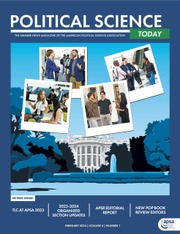How do individuals—when faced with sudden, intense, systematic violence against them—choose survival strategies? Typically, there are four options: some run away, some fight back, and others try to blend in or find a safe spot. A recent APSR article by Aidan Milliff presents a new theory, Situational Appraisal Theory, to explain why individuals’ survival strategies vary in the face of violence and uncertainty. Milliff’s research focus is on Indian Sikhs’ actions during the anti-Sikh pogrom in North India during the 1980s.

The 1980s and 1990s in Punjab were marked by armed insurgency, where Sikh separatist leaders demanded an independent state called Khalistan. June 1984 was a pivotal moment when Indian authorities launched Operation Blue Star against Sikh extremists who had taken refuge in the sacred Golden Temple Complex. This operation, while resulting in the deaths of hundreds of militants and civilians, also caused significant damage to the holy complex, fueling resentment and anger among the Sikh population. In retaliation, the then Prime Minister Indira Gandhi was killed by her two Sikh bodyguards in October 1984. This sparked horrific violence aimed at Sikhs in many parts of North India. Thus, the 1980s and 1990s were violence-ridden periods fueled by Sikh insurgency, state repression, and human rights abuses. During this time of violence and instability, Sikhs chose various survival strategies that Milliff investigates in this article.

Milliff argues that individuals facing threats make judgments about two crucial aspects before making a decision. One, they perceive their ability to control the situation when faced with a threat. Second, they try to predict what might come next. Based on these two assessments, they pick one of the four survival strategies: flee, fight, hide, or adapt. To test his arguments, Milliff collected over 500 survivor testimonies gathered from video archives compiled by a civil society organization. These testimonies included experiences from 134 women and 369 men. He further conducted interviews with survivors and victims. He analyzed each of these survivor testimonies and interviews based on how each individual described their judgment of the situation and the eventual survival strategy they opted for.
The findings from this analysis show that individuals chose to flee when they felt that the situation was highly unpredictable and uncontrollable. For example, Milliff cites a testimony of two Sikh sisters who felt that their house was bound to be attacked by the mob. They initially attempted to hide but felt a lack of control over the situation by hiding. They then ultimately chose to flee. Conversely, individuals perceiving a greater degree of control opted to either adapt or fight. For example, those who had access to guns felt a higher sense of control and chose to fight back rather than flee.
Milliff’s meticulous research demonstrates the valuable contribution of oral histories and interviews in explaining human behavior within insecure and conflict-ridden environments. While previous work has largely focused on material factors such as poverty and access to resources in explaining individuals’ choices in such situations, this analysis suggests that individuals’ assessments of control and predictability are also powerful determinants of individuals’ actions. Thus, this work provides a deeper understanding of how individuals navigate violence by making critical judgments and adopting diverse survival strategies. ■
MILLIFF, AIDAN. 2023. “Making Sense, Making Choices: How Civilians Choose Survival Strategies during Violence.” American Political Science Review, 1–19. https://doi.org/10.1017/S0003055423001259




